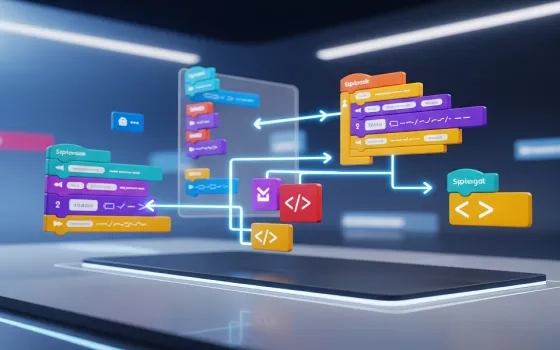In today’s fast-paced business environment, gathering feedback is crucial for understanding customer needs, improving products, and enhancing overall user experience. Many organizations turn to off-the-shelf feedback tools as a quick and easy solution. While these tools offer convenience, they often fall short when compared to custom feedback solutions tailored to specific business needs. In this blog, we’ll explore five key reasons why off-the-shelf feedback tools can’t compete with custom solutions, and why investing in a personalized approach can yield better results for your business.
Customer feedback management software
1. Lack of Flexibility and Customization
Off-the-shelf feedback tools are designed to cater to a broad audience, which means they come with pre-built templates, standardized question types, and rigid workflows. While this may work for basic feedback collection, it often fails to address the unique needs of your business or industry.
For example, if you’re in the healthcare sector, you might need to collect highly specific patient feedback that complies with strict privacy regulations like HIPAA. Off-the-shelf tools may not offer the necessary customization to ensure compliance or capture the nuanced data you require. Custom solutions, on the other hand, can be tailored to your exact specifications, allowing you to design feedback forms, surveys, and workflows that align with your goals.
Additionally, custom solutions enable you to adapt as your business evolves. Whether you’re launching a new product, entering a new market, or changing your customer engagement strategy, a custom feedback system can be modified to reflect these changes. Off-the-shelf tools, however, often require you to work within their limitations, stifling innovation and growth.
2. Limited Integration Capabilities
Customer feedback management software
One of the biggest drawbacks of off-the-shelf feedback tools is their limited ability to integrate with your existing systems. Most businesses rely on a suite of tools and platforms, such as CRM software, marketing automation systems, and data analytics tools. Off-the-shelf feedback tools often operate in isolation, making it difficult to sync data across platforms or gain a holistic view of customer insights.
Custom feedback solutions, on the other hand, can be seamlessly integrated into your existing tech stack. This ensures that feedback data flows directly into your CRM, analytics dashboard, or other relevant systems, enabling you to make data-driven decisions in real time. For instance, if a customer submits negative feedback, a custom solution can automatically trigger an alert in your CRM, prompting your customer service team to take immediate action.
By breaking down data silos and enabling cross-platform integration, custom solutions provide a more cohesive and efficient feedback management process. This level of integration is rarely achievable with off-the-shelf tools, which often require manual data transfers or third-party plugins to bridge the gap.
3. Inability to Capture Contextual Insights
Feedback is most valuable when it’s contextual. Understanding the “why” behind customer responses is critical for identifying pain points and opportunities for improvement. Unfortunately, off-the-shelf feedback tools often lack the sophistication to capture contextual insights.
Customer feedback management software
For example, a generic survey might ask customers to rate their satisfaction on a scale of 1 to 10, but it won’t provide insights into what specifically influenced their rating. Did they have a negative experience with your customer support team? Was there an issue with your product’s functionality? Without context, it’s difficult to take meaningful action.
Custom feedback solutions can be designed to capture contextual data by incorporating dynamic questioning, conditional logic, and follow-up prompts. For instance, if a customer rates their experience as poor, a custom survey can automatically ask for more details about their experience. This level of granularity allows you to dig deeper into customer feedback and uncover actionable insights.
Moreover, custom solutions can leverage advanced analytics and AI to analyze open-ended responses, sentiment, and behavioral data. This enables you to identify trends and patterns that might otherwise go unnoticed with off-the-shelf tools.
4. Poor User Experience for Both Customers and Employees
The user experience (UX) of feedback tools matters just as much as the data they collect. Off-the-shelf tools often come with clunky interfaces, limited design options, and a lack of personalization, which can frustrate both customers and employees.
For customers, a poorly designed feedback form can lead to survey fatigue or abandonment. If the process is too time-consuming or confusing, they’re less likely to provide honest and detailed feedback. Custom solutions, however, can be designed with your audience in mind, ensuring a seamless and engaging experience. From branded surveys to mobile-friendly interfaces, custom tools can be optimized to encourage participation and improve response rates.
For employees, off-the-shelf tools can create unnecessary complexity and inefficiencies. Without proper training or customization, your team may struggle to navigate the tool, analyze data, or generate reports. Custom solutions can be tailored to your team’s workflow, providing intuitive dashboards, automated reporting, and role-based access. This not only saves time but also empowers your team to make better use of feedback data.
5. Scalability and Long-Term Viability
As your business grows, so do your feedback needs. Off-the-shelf tools may work well for small-scale operations, but they often lack the scalability required to support larger organizations or more complex feedback processes. For instance, if you’re collecting feedback from multiple regions, languages, or customer segments, an off-the-shelf tool may struggle to handle the volume and diversity of data.
Custom feedback solutions are built with scalability in mind. Whether you’re expanding to new markets, increasing your customer base, or launching new products, a custom system can grow with your business. You can add new features, integrate additional data sources, or modify workflows as needed, ensuring that your feedback process remains effective and efficient.
Furthermore, off-the-shelf tools are often subject to the vendor’s roadmap and priorities. If the vendor discontinues a feature or raises prices, you may be forced to adapt or switch tools altogether. Custom solutions, however, give you full control over the system’s development and maintenance. This ensures long-term viability and reduces the risk of disruptions to your feedback process.
How Low-Code No-Code (LCNC) Technology is Revolutionizing Customer Feedback Management
Low-code/no-code (LCNC) platforms are transforming the customer feedback management industry by making it easier, faster, and more cost-effective for businesses to build tailored solutions. These tools empower non-technical users to create custom feedback systems without extensive coding, democratizing access to advanced feedback tools for businesses of all sizes.
LCNC platforms accelerate time-to-market, enabling companies to deploy feedback solutions in days or even hours. This agility is crucial for responding to customer needs and staying competitive. Additionally, LCNC tools excel at integration, seamlessly connecting with existing systems like CRMs, marketing platforms, and analytics tools. This ensures feedback data flows smoothly across the organization, enabling real-time insights and actionable decisions.
Another key advantage is the ability to iterate and improve feedback systems continuously. Businesses can quickly modify surveys, add new features, or incorporate advanced analytics like sentiment analysis, ensuring their feedback tools evolve with customer expectations.
Cost efficiency is another major benefit. LCNC platforms reduce the need for expensive development teams, offering affordable subscription models that make custom feedback solutions accessible to SMBs and startups.
Finally, LCNC technology enhances personalization, allowing businesses to design customer feedback experiences that resonate with their audience. From dynamic surveys to branded interfaces, these tools help companies gather richer, more contextual insights.
In short, LCNC platforms are revolutionizing feedback management by combining flexibility, speed, and affordability, empowering businesses to build solutions that truly meet their needs.
Conclusion: The Case for Custom Feedback Solutions
While off-the-shelf feedback tools may seem like a convenient and cost-effective option, they often fall short in meeting the unique needs of your business. From limited customization and integration capabilities to poor user experience and scalability issues, these tools can hinder your ability to collect meaningful insights and drive actionable outcomes.
Custom feedback solutions, on the other hand, offer unparalleled flexibility, integration, and scalability. By tailoring the feedback process to your specific requirements, you can capture richer insights, improve customer and employee experiences, and future-proof your feedback strategy.
Investing in a custom solution may require more time and resources upfront, but the long-term benefits far outweigh the costs. In a world where customer feedback is more important than ever, a personalized approach can give your business the competitive edge it needs to thrive.
So, the next time you’re evaluating feedback tools, consider whether an off-the-shelf solution truly meets your needs—or if it’s time to explore the possibilities of a custom-built system. Your customers, your team, and your bottom line will thank you.


















